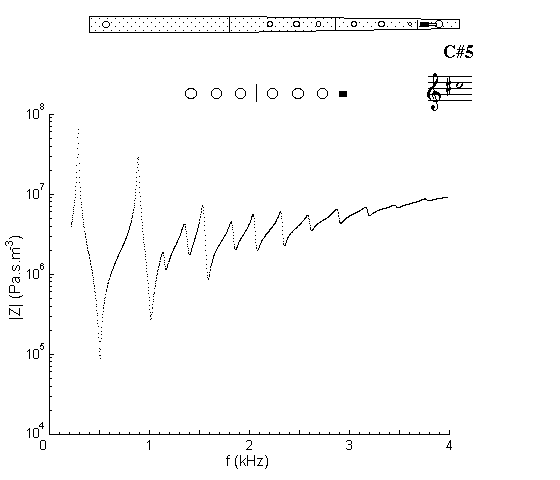| Acoustics of baroque, classical and modern flutes |
baroque flute |
C#5 |

|
Acoustic and Fingering Schematic Non-specialist introduction
to acoustic impedance |
This fingering has no noticeable cross fingering. Because of the filtering effect of the series of open tone holes, however, only the first two minima are harmonic, and so the third harmonic in the sound spectrum is weak. There is an impedance minimum to support the fourth harmonic however, and so this timbre is relatively bright. Unlike normal flutes, this fingering will not play C#6 accurately, because this minimum is already beyond the harmonic region.

Sound spectrum
of a baroque flute played using fingering for C#5
with key.
![]()
![]()
![]()
![]() You can hear C#5
played by Matthew Ridley.
You can hear C#5
played by Matthew Ridley.
| Acoustic measurements are available for these flutes - modern B, modern C, classical C, classical D, classical flared, baroque Sound clips are available for modern B, classical flared and baroque |
To compare flutes, it is easiest to open a separate browser window for each instrument. |